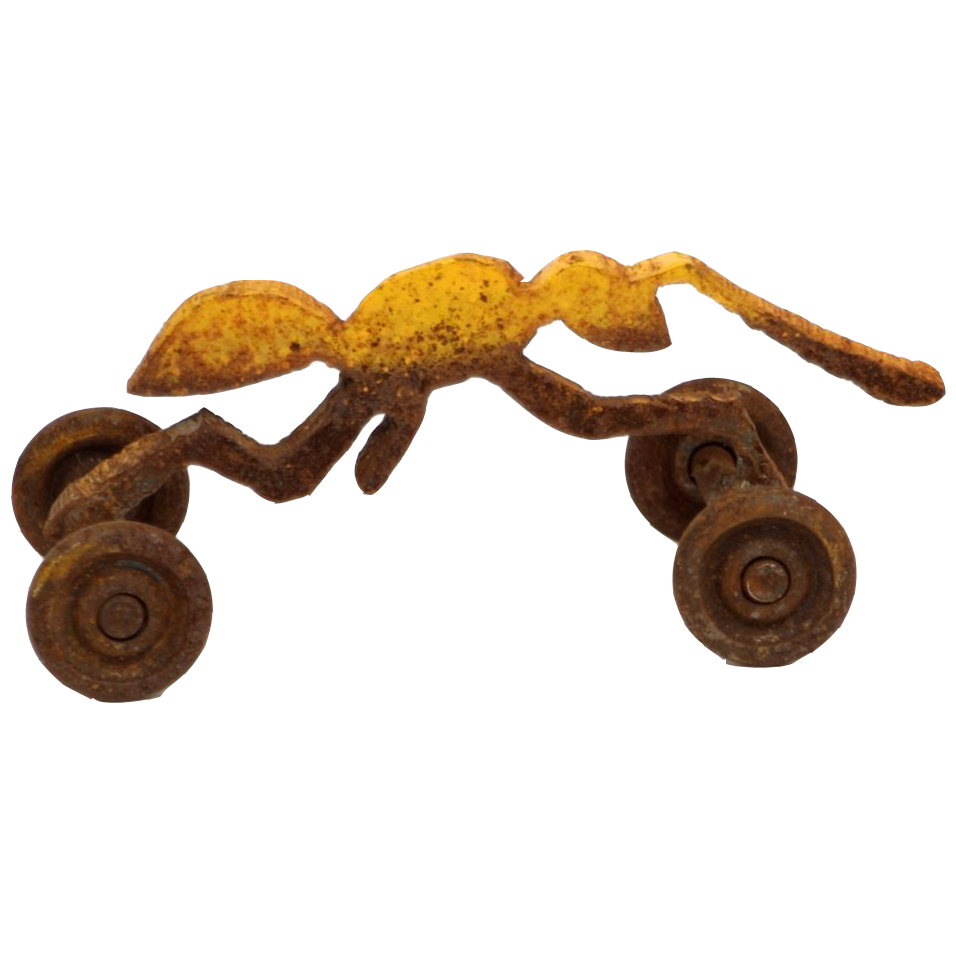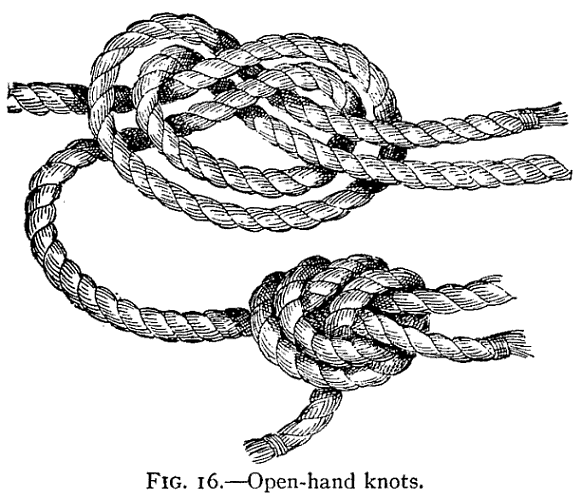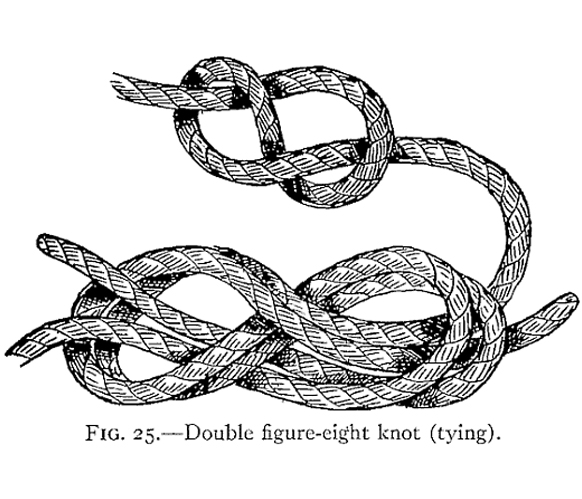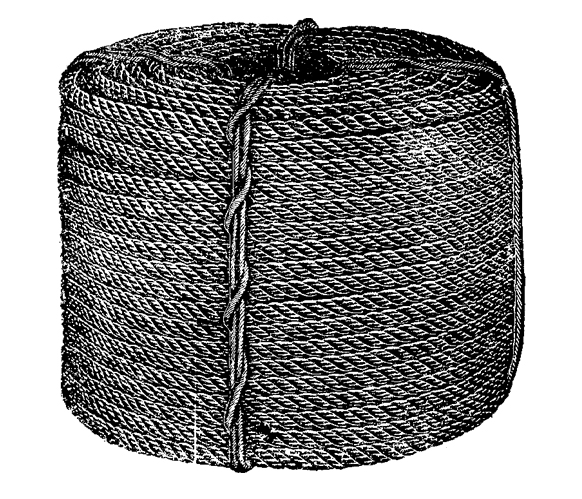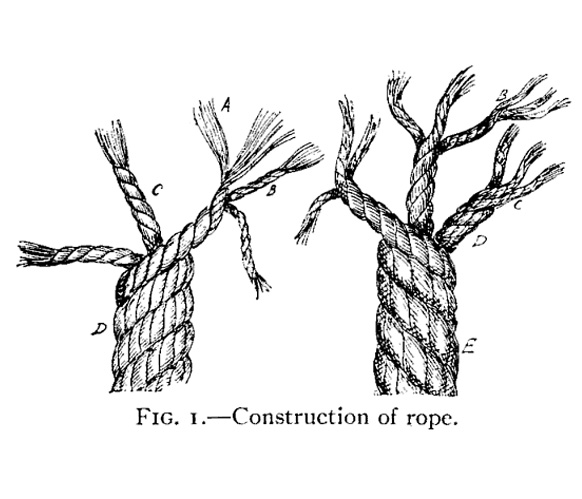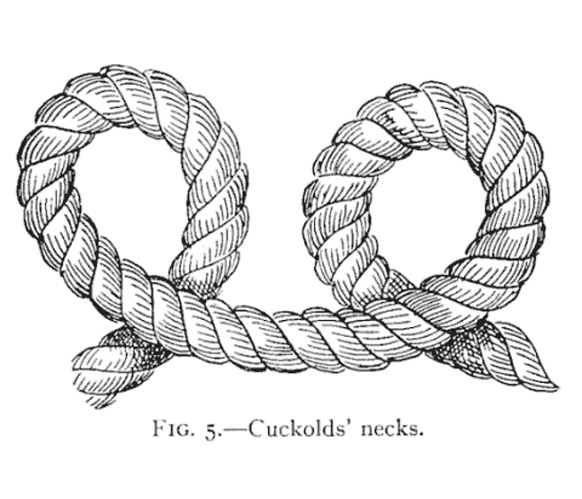Knowing how to tie knots can be very helpful by itself, whether your fishing, camping, or tying off a boat, there are many knots that come in handy for various reasons. For our purposes we’ll use rope and knots to learn about art elements of line, shape, and space, discover how to overlap to create depth in a drawing, and become familiar with the various principles of negative space. Negative space refers to the space, or air, penetrating and surrounding an object, as opposed to the positive space which is the material form itself. A ceramic coffee mug, for example, often has a negative space to form a handle for the fingers, and a cavity for the liquid that will go inside. The concept of positive and negative space hold philosophical principle as well, this is often represented by the well known yin wang, or town and country symbol. In the Tao Te Ching, Lao Tzu explores this philosophical enigma.
11
Thirty spokes share the wheel’s hub;
It is the center hole that makes it useful.
Shape clay into a vessel;
It is the space within that makes it useful.
Cut doors and windows for a room;
It is the holes which make it useful.
Therefore profit comes from what is there;
Usefulness from what is not there.¹
-Lao Tzu
Knots and Rope Work
³
As artists, the negative spaces in a subject need to translate to elements of shape, these shapes are then combined, balanced and harmonized with the forms to create a composition. Studying the negative spaces of an object is a key strategy in drawing and illustration as the shapes are often simpler to draw than the object, the negative spaces between the different objects also help an artist recognize their placement and relationship to each other in space.
Analyze the positive and negative shapes in the knots illustrations featured below. How many spaces are there? How much of a percentage of the scene do the spaces encompass? How do they help define the depth of the scene? What is the difference between the background areas and negative space? Can you draw the object without drawing the object?
“It’s the space between the bars that holds the tiger.”
– Zen Koan
Explore the studio resources provided, use the knot playing cards to help you construct a knot with various weights and lengths of rope. Practice tying different knots and get familiar with the overlapping order of lines within a knot. Keep the final knot loose allowing the negative spaces to be evident and combine with the forms in the scene, allow the viewer to see the loops and overlaps thus creating space and depth within the scene.
“The rabbit comes out of the hole around the tree and back into the hole.”
– bowline mnemonic
Terms and Concepts
Composition, the arrangement of elements in a picture, forms, lines and shapes.
Depth, the illusion of real space on a flat surface.
Negative space, space surrounding or penetrating an object.
Overlapping, drawing, placing one object over another to give the illusion of space.
Positive space, the object or form taking up space in a picture or sculpture.
Space, the appearance of depth in a picture, open areas in an artwork, depth, 2d or 3d
Rhythm, an element in art that uses fast or slow movements, musical rhythm.
Articles & Books
The Art of Negative Space, by Tang Yau Hoong
The Ashley Book of Knots by Clifford W. Ashley
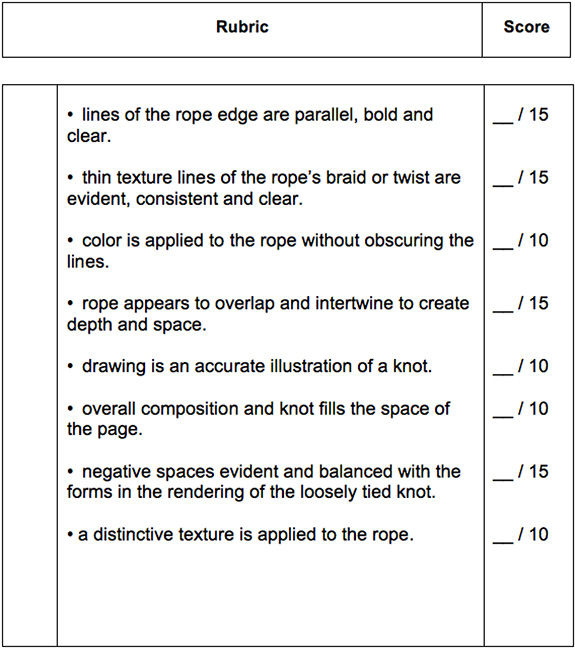
¹ Stenudd, S. Tao Ching 11, taoistic.com/taoteching-laotzu/taoteching-11.htm
² Tang, Y. H. The Art of Negative Space, http://tangyauhoong.com/portfolio/the-art-of-negative-space/
³ Images Source: Hollander, P. and Holder, R. Knots, Splices, and Rope Work, by www.gutenberg.net
